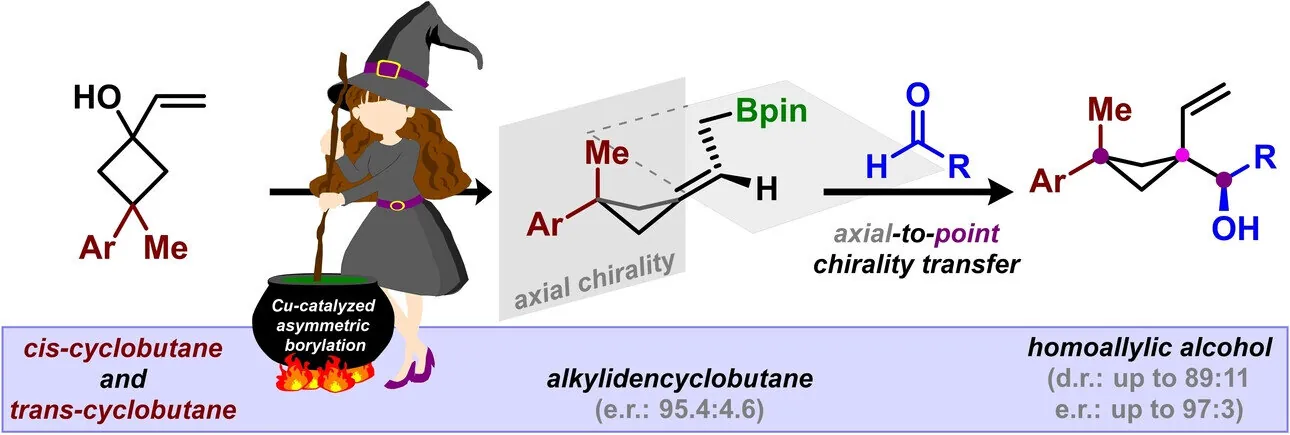
Groundbreaking Discovery in Molecular Symmetry Could Shed Light on the Origins of Life!
2024-10-23
Author: Yu
Innovative Methodology Unveiled
In an exciting breakthrough that could transform our understanding of organic chemistry and the origins of life, researchers at the University of the Basque Country (UPV/EHU) have unveiled a novel methodology capable of breaking molecular symmetry. This innovative approach offers significant insights into the nature of certain organic molecules, particularly enantiomers—mirror images of each other that often exhibit drastically different properties.
The Analogy of Human Hands
To grasp the importance of this discovery, consider the analogy of human hands. Though our hands appear identical, they are actually non-superimposable mirror images; one hand cannot perfectly align with the other when placed over it. Similarly, in the molecular world, certain compounds can possess the same atomic makeup yet behave fundamentally differently based on their spatial arrangement. These unique compounds, or enantiomers, have critical implications in fields like pharmacology.
Implications in Pharmacology
Take thalidomide, a drug initially prescribed to pregnant women for nausea relief. It is a prime example of how one enantiomer can possess therapeutic benefits while its mirror counterpart may cause severe birth defects. Efraim Reyes, a Ph.D. holder from UPV/EHU, emphasizes the necessity of meticulously controlling the synthesis of these molecules to isolate one beneficial enantiomer over the other in medicinal applications.
Selective Synthesis of Enantiomers
Under the supervision of Professor José Luis Vicario, the UPV/EHU's Metal Catalysis and Organocatalysis Research Group, in collaboration with Rovira i Virgili University, has accomplished the selective synthesis of enantiomers of cyclobutanes—molecules characterized by their carbon and hydrogen ring structure. This remarkable achievement, recently published in *Angewandte Chemie International Edition*, marks a significant advance in synthetic organic chemistry.
Pivotal Role of Researchers
Josebe Hurtado, a pre-doctoral researcher at UPV/EHU, played a pivotal role in this research. She developed a novel methodology capable of creating asymmetrical molecules that have previously eluded scientists. Reyes, her thesis supervisor, explained that their desymmetrization technique breaks the conventional planar symmetry of these molecules, transforming them into essential building blocks for more complex structures.
Benign Catalysts and Future Prospects
What sets this work apart is the use of a benign copper-based catalyst, enabling efficient and direct synthesis without the need for toxic reagents. This innovative approach not only addresses a long-standing challenge in molecular synthesis but also opens up exciting opportunities for developing new therapeutic agents.
Understanding Asymmetric Biomolecules
Moreover, Vicario noted their team’s ability to produce molecules with unprecedented axial asymmetry, further enhancing the potential for creating novel compounds for medical applications. By meticulously controlling the reactions, the researchers successfully transformed planar asymmetry into axial, and subsequently point asymmetry, thereby hinting at a shared origin among asymmetric biomolecules.
Implications for the Origin of Life
Interestingly, this discovery has profound implications for understanding the origin of life itself. The concept of spontaneous desymmetrization—which posits that the molecules leading to life emerged from natural processes that broke symmetry—aligns with the researchers' findings. As they continue to explore this groundbreaking avenue, we may soon gain vital insights into life's earliest beginnings.
Conclusion and Future Updates
As this research unfolds, scientists and medical professionals alike are left pondering the exciting possibilities that these newly synthesized asymmetric molecules may hold for future drug development and a deeper understanding of life's origins. Stay tuned for more astonishing updates from the world of chemistry!



 Brasil (PT)
Brasil (PT)
 Canada (EN)
Canada (EN)
 Chile (ES)
Chile (ES)
 España (ES)
España (ES)
 France (FR)
France (FR)
 Hong Kong (EN)
Hong Kong (EN)
 Italia (IT)
Italia (IT)
 日本 (JA)
日本 (JA)
 Magyarország (HU)
Magyarország (HU)
 Norge (NO)
Norge (NO)
 Polska (PL)
Polska (PL)
 Schweiz (DE)
Schweiz (DE)
 Singapore (EN)
Singapore (EN)
 Sverige (SV)
Sverige (SV)
 Suomi (FI)
Suomi (FI)
 Türkiye (TR)
Türkiye (TR)